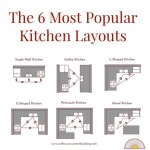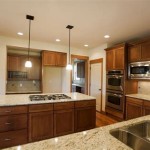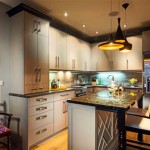Standard Width for Upper Kitchen Cabinets: Maximizing Space and Style
When designing a functional and stylish kitchen, selecting the right size for your upper cabinets is crucial. The width of these cabinets plays a significant role in determining the overall look and functionality of your kitchen space. In this comprehensive guide, we will explore the standard width for upper kitchen cabinets, helping you make informed decisions during your kitchen renovation or remodeling project. ### Understanding Upper Kitchen Cabinet Width Upper kitchen cabinets are typically mounted at a specific height above your countertops to provide ample storage space for various kitchen items. The width of these cabinets can vary depending on the available space, the layout of your kitchen, and your personal preferences. ### Standard Widths and Their Applications 1.12 Inches (30.48 cm):
- Ideal for small kitchens where space is at a premium. - Often used as open shelves or spice racks. - Suitable for storing small items like spices, jars, and glasses. 2.18 Inches (45.72 cm):
- A versatile width commonly found in most kitchen designs. - Accommodates a wide range of items, including dishes, cookware, and food containers. - Perfect for kitchens with limited storage space. 3.24 Inches (60.96 cm):
- The most common width for upper kitchen cabinets. - Offers ample storage capacity for various kitchen supplies. - Suitable for both small and large kitchens. 4.30 Inches (76.2 cm):
- Provides generous storage space for bulky items like pots, pans, and kitchen appliances. - Often used in larger kitchens with more available space. - Can also be divided into multiple compartments for better organization. ### Factors to Consider When Choosing Width 1.Kitchen Size:
- Measure the available space in your kitchen, including the width of the area above your countertops. - Consider the size of appliances, such as the refrigerator and stove, that may affect cabinet placement. 2.Cabinet Height:
- Determine the desired height of your upper cabinets, taking into account the height of your countertops and the overall kitchen layout. - Ensure that the cabinets are positioned at a comfortable reach for everyday use. 3.Storage Needs:
- Assess your storage requirements and the types of items you need to store in your upper cabinets. - If you have a large collection of dishes or cookware, wider cabinets may be necessary. 4.Kitchen Layout:
- Consider the placement of windows, doors, and other structural elements that may restrict the width of your upper cabinets. - Ensure that the cabinets do not obstruct access to these areas. 5.Aesthetics and Design:
- Choose cabinet widths that complement the overall design style of your kitchen. - Wider cabinets can create a sleek and modern look, while narrower cabinets may be better suited for traditional or rustic kitchens. ### Additional Tips for Maximizing Space and Style 1.Use a Combination of Widths:
- Consider mixing different cabinet widths to create a more dynamic and visually appealing look. - For example, you could use 18-inch cabinets for most of the upper cabinets and 24-inch cabinets for areas where you need more storage. 2.Incorporate Open Shelves:
- Open shelves can provide additional storage space and display your favorite kitchen items. - They can also help break up the monotony of solid cabinet doors. 3.Utilize Corner Cabinets:
- Corner cabinets can maximize storage space in often-overlooked areas of the kitchen. - Choose corner cabinets with specialized shelves or organizers to make the most of this space. 4.Consider Cabinet Depth:
- Cabinet depth also plays a role in storage capacity. - Standard cabinet depths range from 12 to 24 inches. Choose a depth that suits your needs and the available space. 5.Choose Functional Hardware:
- Select cabinet hardware, such as knobs or handles, that are not only stylish but also easy to grip and use. - Consider hardware that complements the overall design of your kitchen. ### Conclusion Choosing the right width for your upper kitchen cabinets is an important step in creating a functional and aesthetically pleasing kitchen. By considering factors such as kitchen size, storage needs, and personal preferences, you can select cabinet widths that optimize space utilization and reflect your unique style. With careful planning and attention to detail, you can achieve a kitchen that is both practical and beautiful.
Wall Cabinet Size Chart Builders Surplus

Kitchen Wall Cabinet Size Chart Builders Surplus Cabinets Dimensions Sizes

Kitchen Cabinet Sizes What Are Standard Dimensions Of Cabinets

The Ultimate Guide To Standard Kitchen Cabinet Sizes Unique Design Blog
Guide To Kitchen Cabinet Sizes And Dimensions

3 Types Of Kitchen Cabinets Size Dimensions Guide Guilin

Standard Upper Cabinet Height Conventions And Codes Kitchen Cabinets Measurements Sizes

N Standard Kitchen Dimensions Renomart

Kitchen Cabinet Depth 2024 Upper Cabinets Dimensions Wall

N Standard Kitchen Dimensions Renomart
Related Posts








